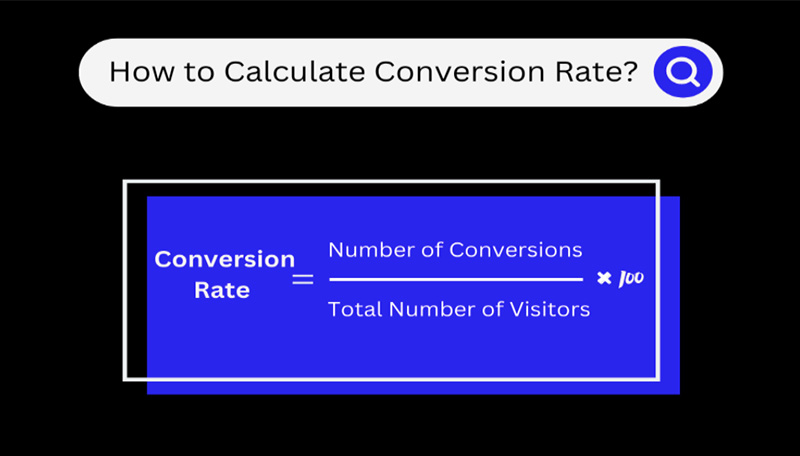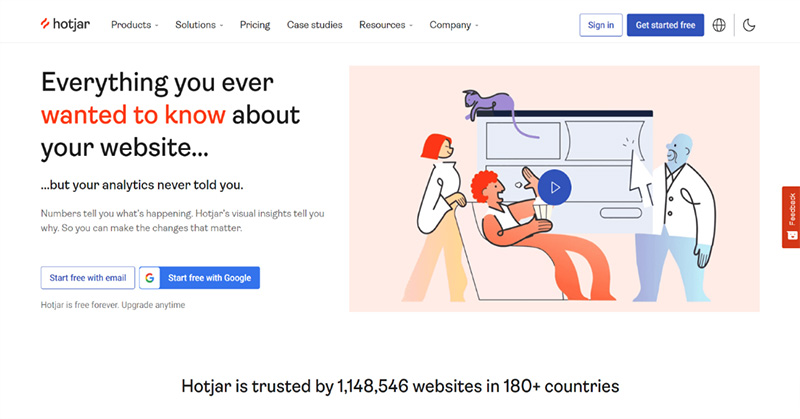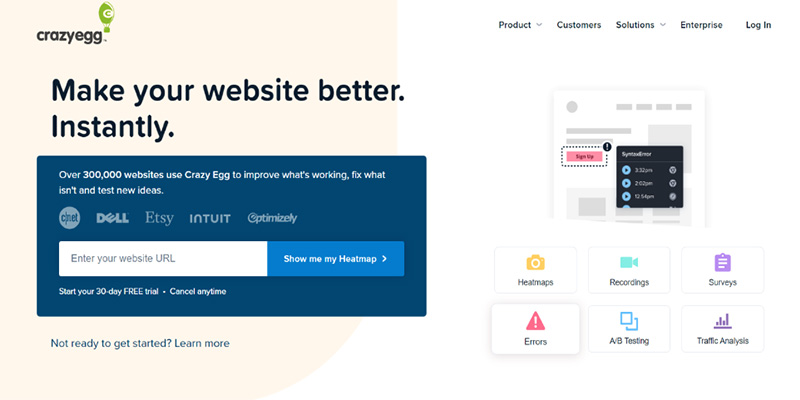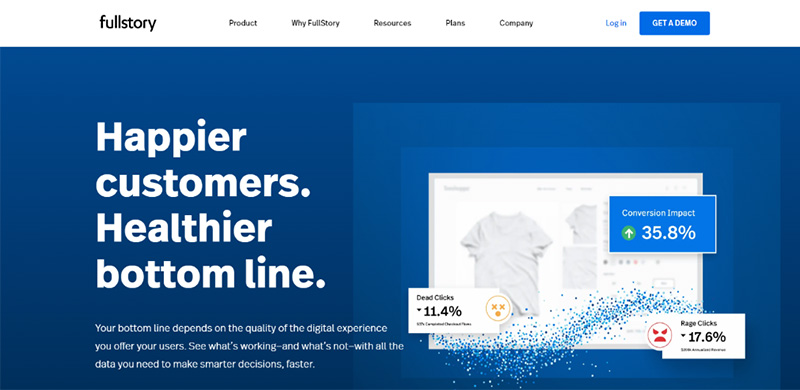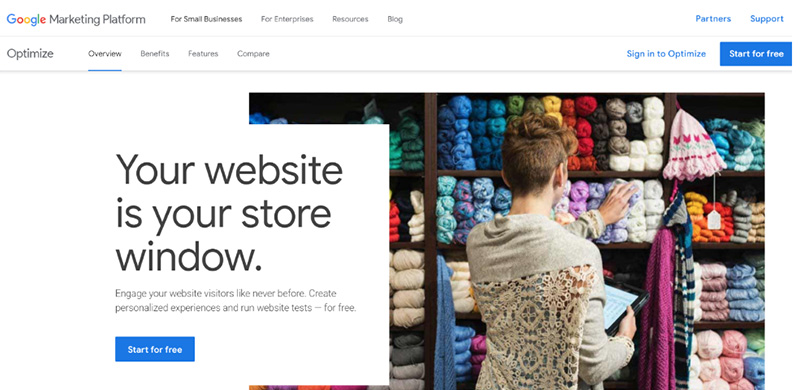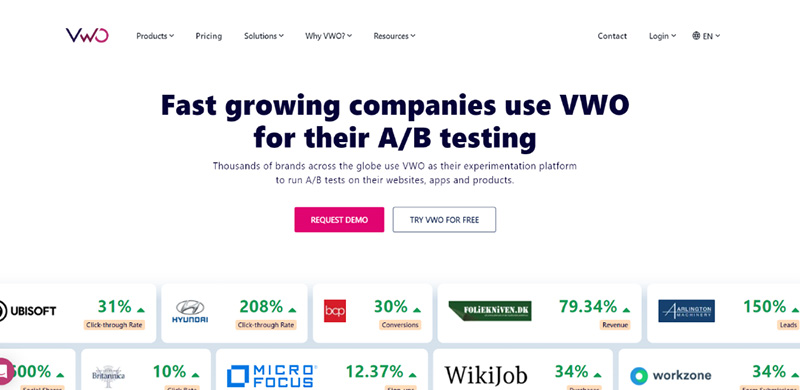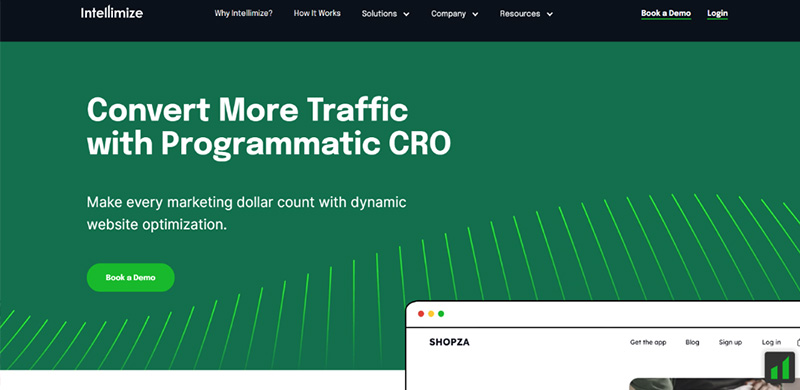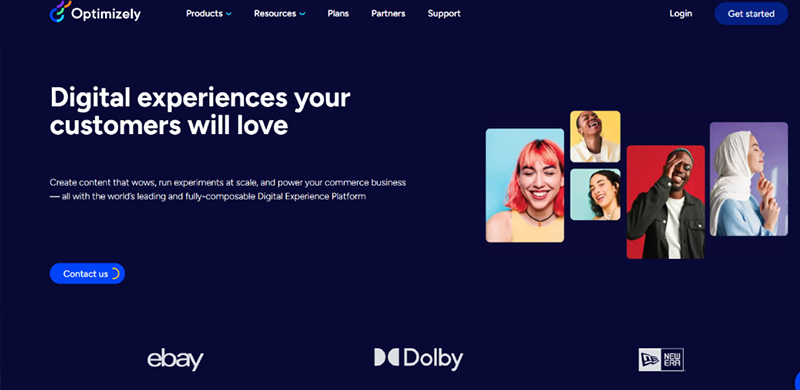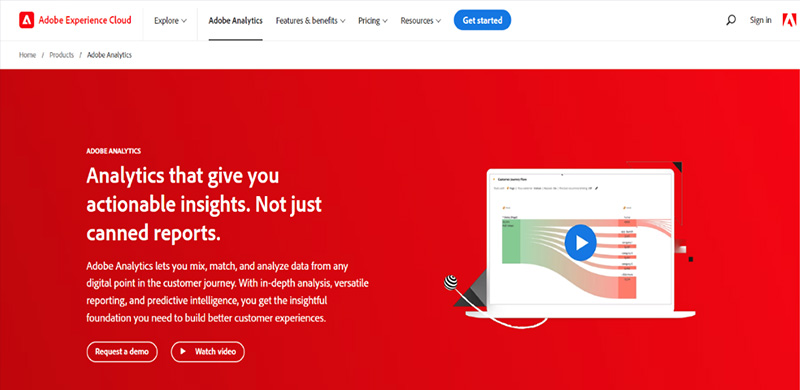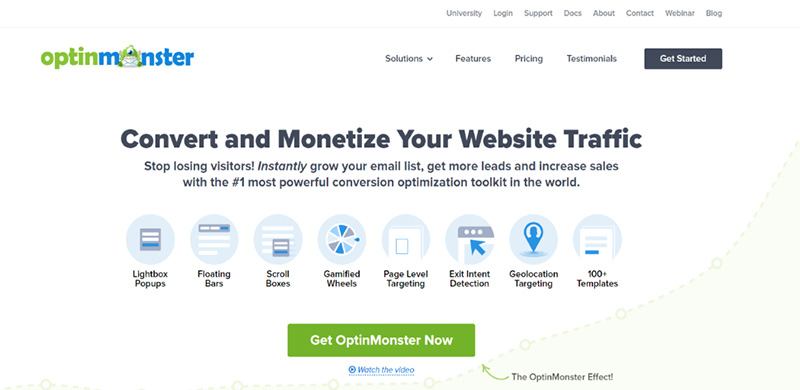Top 10 Conversion Rate Optimization Tools in 2023

What is CRO?
Conversion rate optimization (CRO) improves the percentage of website visitors who take a desired action, such as purchasing, filling out a form, or subscribing to a newsletter. The goal of CRO is to increase the conversion rate of a website or landing page by optimizing various elements, such as the copy, design, layout, user experience, and call-to-action (CTA) buttons.
CRO analyzes data from user behavior, such as heat maps, click-through rates, bounce rates, and conversion funnels, to identify areas of improvement. Based on this data, experts make changes to the website or landing page using different conversion rate optimization tools, such as testing different headlines, changing the placement of CTAs, simplifying the checkout process, and improving website speed and mobile responsiveness.
CRO aims to create a better user experience and increase the likelihood that visitors will convert into customers. By optimizing conversions, businesses can increase revenue, reduce customer acquisition costs, and improve the overall performance of their digital marketing campaigns.
How to optimize your Conversion Rate?
In most cases, it is a bug blocking your audience from taking the desired action. But for times when everything on the technical end is up to date, you require to optimize your campaigns using different conversion rate optimization tools for a better conversion optimization rate.
The process of CRO can be broken down into several steps:
- Define Your Goals: The first step in CRO is to define your conversion goals. This could include increasing sales, leads, or downloads. It’s important to have a clear understanding of what actions you want visitors to take on your website or landing page, and based on that you can take necessary steps to optimize your CRO.
- Analyze User Behavior: The next step is to analyze user behavior on your website or landing page using tools like Google Analytics. For any campaign to succeed, you have to understand how visitors interact with your website and where they may be dropping off in the conversion process. The user experience is a crucial part and to perfect this many marketers use several conversion rate optimization tools and methods like beta testing to understand what is working best for the target audience. This can help you identify areas that need improvement.
- Develop Hypotheses: Based on the data you have collected; the next step is to develop hypotheses for how to improve the conversion rate. For example, you might hypothesize that changing the color of your CTA button will increase conversions. It’s important to base your hypotheses on data and insights rather than guesswork.
- Test Your Hypotheses: The next step is to test your hypotheses using A/B testing or multivariate testing. This involves creating different versions of your website or landing page and testing them against each other to see which version performs better. You might test different versions of your headline, CTA button, or page layout.
- Analyze Your Results: Once you have completed your testing, the next step is to analyze your results. You want to understand which version of your website or landing page performed better and why. This can help you refine your hypotheses and identify additional opportunities for improvement.
- Implement Changes: Based on your analysis, you can implement changes to your website or landing page to improve the conversion rate. This might involve making changes to your headline, CTA button, or page layout. It’s important to continue testing and refining your approach to improve your conversion rate over time.
- Incentivize User Actions: Finally, you can increase user retention, promote repeat purchases, or even encourage users to take specific actions by attaching a reward or a bonus.
The process of CRO is an ongoing and iterative process, and requires a commitment to testing, data analysis, and continuous improvement. By optimizing your conversion rate, you can increase your revenue, reduce your customer acquisition costs, and improve the overall performance of your digital marketing efforts.
What to look for in a CRO tool?
Conversion Rate Optimization (CRO) tools are essential for businesses to understand how their website or app performs and how to improve it. When selecting a CRO tool, it’s necessary to consider the following factors:
- Ease of Use: The CRO tool should be user-friendly and easy to navigate. Users should be able to access the data and insights they need to make informed decisions quickly.
- Integrations: The CRO tool should integrate with the existing tools and platforms businesses use, such as Google Analytics, Salesforce, or Shopify. This will enable enterprises to combine their data and comprehensively view their performance.
- Flexibility: The CRO tool should be flexible enough to accommodate different types of experiments, such as A/B testing, heat maps, or surveys. This will enable businesses to test various elements of their website or app and find the best solution for their audience.
- Analytics and Reporting: The CRO tool should provide robust analytics and reporting capabilities, allowing businesses to track and measure their performance and make data-driven decisions.
- Personalization: The CRO tool should allow businesses to personalize their website or app to their audience’s preferences and behavior, increasing the likelihood of conversions.
- Customer Support: The CRO tool should provide excellent customer support and resources, including training, onboarding, and troubleshooting.
Top 10 Conversion Rate Optimization Tools
Qualaroo
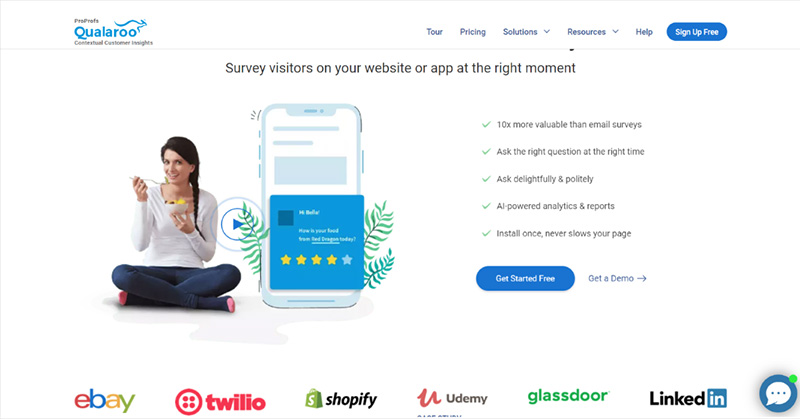
Qualaroo is a conversion rate optimization tool that helps businesses improve their website’s user experience and increase conversions by providing real-time insights into visitor behavior. With Qualaroo, companies can create surveys and feedback forms that prompt users to provide feedback on their experience, allowing companies to identify pain points and areas for improvement.
Qualaroo is relatively easy to use and provides many customization options.
Price: Qualaroo offers a free trial, but the paid plans start at $199/month.
Special Features: Qualaroo provides a wide range of targeting options and allows you to create customized surveys and forms for your website visitors.
Hotjar
Hotjar is an all-in-one conversion rate optimization tool that gives businesses insights into user behavior on their website through features such as heat maps, session recordings, and user feedback polls. With Hotjar, companies can understand how users interact with their websites and identify areas for improvement to increase conversions.
Hotjar is user-friendly and has a straightforward interface.
Price: Hotjar offers a free plan with limited features, but the paid plans start at $39/month.
Special Features: Hotjar provides heat maps, session recordings, and feedback polls to help you understand user behavior and improve your website’s conversion rate.
Crazy Egg
Crazy Egg is a conversion rate optimization tool that uses heat maps, scroll maps, and user behavior data to give businesses insights into how users interact with their websites. With Crazy Egg, companies can identify which parts of their website most engage users and which areas may need improvement to increase conversions.
Crazy Egg is relatively easy to use, and it doesn’t require any coding skills.
Price: Crazy Egg offers a free trial, but the paid plans start at $24/month.
Special Features: Crazy Egg provides a wide range of visualization tools, including heat maps, scroll maps, and click reports.
FullStory
FullStory is a conversion rate optimization tool that provides businesses with session replay and user behavior analytics to help them understand how users interact with their websites. With FullStory, companies can identify issues impacting conversions and make data-driven decisions to improve the user experience.
FullStory is easy to use and provides a user-friendly interface.
Price: FullStory offers a free plan with limited features, but the paid plans start at $199/month.
Special Features: FullStory provides session replay, heat maps, and user journey analysis, which can help you understand user behavior and improve your website’s conversion rate.
Google Optimize
Google Optimize is a free conversion optimization tool provided by Google that allows businesses to run A/B tests and make data-driven decisions to improve their website’s performance. With Google Optimize, businesses can test different variations of their website to decide which changes will lead to the highest conversion rates.
Google Optimize is easy to use and integrates with other Google tools like Analytics.
Price: Google Optimize is free, but the paid version (Google Optimize 360) starts at $150,000/year.
Special Features: Google Optimize provides A/B testing, multivariate testing, and personalization options, which can help you improve your website’s conversion rate.
VWO
VWO is a conversion rate optimization tool that provides businesses with A/B testing, multivariate testing, and user behavior analytics to help them improve their website’s user experience and increase conversions. With VWO, companies can make data-driven decisions to improve the user experience and optimize their website for maximum conversions.
VWO is easy to use and provides a user-friendly interface.
Price: VWO offers a free trial, but the paid plans start at $199/month.
Special Features: VWO provides A/B testing, multivariate testing, and personalization options, as well as heat maps and visitor recordings.
Intellimize
Intellimize is a conversion rate optimization tool that uses machine learning to provide businesses personalized experiences for each user, improving the user experience and increasing conversions. With Intellimize, businesses can deliver tailored user experiences based on their behavior and preferences, ultimately increasing conversion rates.
Intellimize is easy to use and provides a user-friendly interface.
Price: Intellimize is relatively expensive, with pricing starting at $2,000/month.
Special Features: Intellimize uses AI and machine learning to personalize your website and provide real-time optimization.
Optimizely
Optimizely is a leading experimentation platform that helps businesses optimize their digital experiences. Optimizely is known for its ease of use and robust set of tools, which make it a popular choice among marketers and developers. The platform offers a range of features, such as A/B testing, personalization, and analytics.
Optimizely is user-friendly. Its drag-and-drop editor makes it easy to create experiments without any coding experience. Additionally, the platform’s visual editor allows users to see their real-time changes, making it easy to test and optimize quickly.
Price: Optimizely offers various pricing plans to suit businesses of all sizes. The plans range from the Basic plan, which starts at $50 per month, to the Enterprise plan, which requires a custom quote.
Special features: Optimizely’s platform is highly customizable, offering a range of advanced features, such as multivariate testing, full-stack testing, and real-time personalization. Additionally, the platform integrates with various third-party tools, including Google Analytics, Salesforce, and Marketo.
Adobe Analytics
Adobe Analytics is an enterprise-level analytics platform that gives businesses insights into digital performance. Adobe Analytics is known for its scalability and ability to handle large amounts of data. The platform offers a range of features, like real-time data visualization, predictive analytics, and audience segmentation.
Adobe Analytics has a steep learning curve, and its complex interface can be challenging to navigate for beginners. However, once users become familiar with the platform, they can use its robust tools to gain valuable insights into their business performance.
Price: Adobe Analytics requires a custom quote, and pricing depends on the specific needs of each business.
Special features: Adobe Analytics offers a range of advanced features, including predictive analytics, anomaly detection, and machine learning. Additionally, the platform integrates with various Adobe products, including Adobe Experience Manager and Adobe Campaign.
OptinMonster
OptinMonster is a lead-generation tool that helps businesses convert website visitors into subscribers and customers. OptinMonster is known for its ability to increase website conversions and generate leads. It offers a range of features, including pop-ups, slide-ins, and exit-intent technology.
OptinMonster is user-friendly and easy to set up, with no coding skills required. The platform’s drag-and-drop builder makes it easy to create campaigns, and its intuitive interface allows users to track and optimize their campaigns quickly.
Price: OptinMonster offers various pricing plans to suit businesses of all sizes. The plans range from the Basic plan, which starts at $9 per month, to the Pro plan, which requires a custom quote.
Special features: OptinMonster’s platform includes advanced features, such as A/B testing, analytics, and page-level targeting. Additionally, the platform integrates with various third-party tools, including MailChimp, Constant Contact, and HubSpot.
These were some of the top conversion rate optimization tools to look out for in 2023.
Importance of choosing the correct Conversion Optimization Tools
Choosing the correct conversion optimization tool is crucial for any online business to increase its website’s conversion rate and revenue. An effective conversion optimization tool provides accurate and actionable insights into the website’s performance and user behavior, allowing website owners to identify areas for improvement and implement changes that can increase conversions. Personalization and segmentation are also essential features that a good conversion optimization tool should offer, enabling businesses to tailor the user experience to meet the needs and preferences of each visitor. Additionally, the tool’s ease of use and pricing structure are critical factors to consider when choosing a conversion optimization tool. Ultimately, the right tool will enable businesses to optimize their website, increase conversions, and maximize revenue. A well-designed CRO tool enables companies to:
- Understand Customer Behavior: A CRO tool helps businesses understand how their audience interacts with their website or app. This information is critical in identifying and addressing any pain points to prevent conversions.
- Optimize User Experience: A CRO tool enables businesses to test different elements of their website or app, such as design, copy, or call-to-action buttons, to identify the most effective solution for their audience.
- Increase Conversions: A CRO tool allows businesses to optimize their website or app for conversions, increasing the likelihood of visitors converting into customers or subscribers.
- Reduce Bounce Rates: By identifying and addressing pain points, a CRO tool helps businesses reduce bounce rates, keeping visitors on their website or app longer.
- Boost Revenue: A well-designed CRO tool can significantly impact a business’s revenue by increasing conversions and reducing bounce rates.
- Stay Competitive: With the abundance of online businesses, staying competitive is crucial. A CRO tool enables companies to stay ahead of the curve by providing the tools and insights necessary to continually improve their website or app.
Conclusion
Whether you’re involved in e-commerce, launching a new site, rapidly expanding, or looking to optimize an already well-established brand, you have much to consider. Fortunately, a variety of tools available can help you achieve your objectives and correct any mistakes you may have made along the way.
Several factors must be considered when choosing the right conversion rate optimization tool for your e-commerce needs. It’s important to carefully evaluate your options and select tools that align with your needs and objectives. Your in-house expertise, business goals, and budget will all play a role in determining which tools are most appropriate for your situation.
For example, suppose you’re starting with e-commerce. In that case, you may need a tool that helps you create a professional-looking website quickly and easily. On the other hand, if you’re scaling quickly, you may need a tool to manage inventory, automate order fulfillment, and streamline your shipping processes.
Regardless of your specific situation, there’s likely a tool to help you achieve your e-commerce goals. By evaluating your options and choosing the right tool for your business, you’ll be well on your way to success in e-commerce.
FAQs
What are the steps to customer centric CRO?
In a customer centric CRO program, there are three essential steps to follow. Firstly, determine what motivates people to visit your website and what they are searching for. Conducting on-site surveys is a valuable way to gain insights from actual visitors and comprehend their expectations upon landing on your site. Secondly, identify the factors that hinder potential customers from completing the desired action, whether purchasing a product, filling out a form, or subscribing to a service. By using behavior analytics tools, you can discover barriers that impede conversions. Lastly, understand what encourages visitors to act by analyzing what works well. A post-purchase survey can provide valuable feedback on what your visitors appreciated or even disliked about their experience on your website. After obtaining this information, you can implement and test modifications to your site.
What are CRO tools?
Conversion Rate Optimization (CRO) tools provide valuable insights about a website’s performance and visitor behavior to assist site owners in enhancing their conversion rates. These tools help in gathering and analyzing data to:
- Gain a clear understanding of visitors’ behavior on the website
- Identify the underlying reasons for visitors’ actions on the website
- Highlight the potential opportunities for improvement on the website
- Implement and evaluate changes on the website through A/B testing or multivariate testing.
By leveraging CRO tools, website owners can make data-driven decisions to optimize their website’s performance, improve user experience, and ultimately increase conversions.


